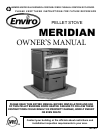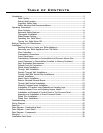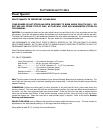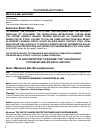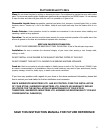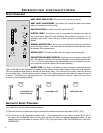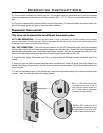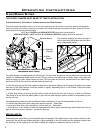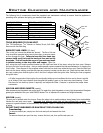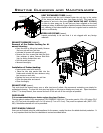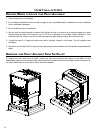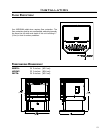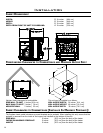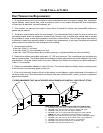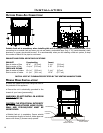
Glass: Do not abuse the glass by striking or slamming the door. Do not attempt to operate the stove with broken
glass. The stove uses ceramic glass. Replacement glass must be purchased from an ENVIRO dealer. Do not attempt
to open the door and clean the glass while the unit is in operation or if glass is hot.
Flammable Liquids: Never use gasoline, gasoline-type lantern fuel, kerosene, charcoal lighter fluid, or similar
liquids to start or “freshen up” a fire in the heater. Keep all such liquids well away from the heater while it is in
use.
Smoke Detector: Smoke detectors should be installed and maintained in the structure when installing and
operating a pellet burning appliance.
Operation: The ash pan and door must be closed securely for proper and safe operation of the pellet stove. Also
ensure all gaskets on the door are checked and replaced when necessary.
KEEP ASH PAN FREE OF RAW FUEL.
DO NOT PLACE UNBURNED OR NEW PELLET FUEL IN ASH PAN. A fire in the ash pan may occur.
Installation: Be sure to maintain the structural integrity of your home when passing a vent through walls,
ceilings, or roofs.
DO NOT INSTALL A FLUE DAMPER IN THE EXHAUST VENTING SYSTEM OF THIS UNIT.
DO NOT CONNECT THIS UNIT TO A CHIMNEY FLUE SERVING ANOTHER APPLIANCE.
Fresh air: Must be connected to all units installed in Mobile Homes as well as “Air Tight Homes” (R2000). Fresh
air intake is recommended on all installations. Failure to install intake air may result in poor performance, smoke,
property damage, house fire, bodily injury, or death under certain conditions.
If you have any questions with regards to your stove or the above-mentioned information, please feel
free to contact your local dealer for further clarification and comments.
SINCE SHERWOOD INDUSTRIES LTD. HAS NO CONTROL OVER THE INSTALLATION
OF YOUR STOVE, SHERWOOD INDUSTRIES LTD. GRANTS NO WARRANTY IMPLIED
OR STATED FOR THE INSTALLATION OR MAINTENANCE OF YOUR STOVE.
THEREFORE, SHERWOOD INDUSTRIES LTD. ASSUMES NO RESPONSIBILITY FOR ANY
CONSEQUENTIAL DAMAGE(S).
SAVE THIS INSTRUCTION MANUAL FOR FUTURE REFERENCE
5
Introduction



